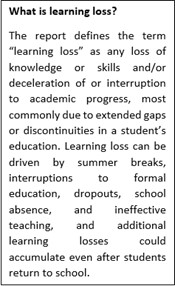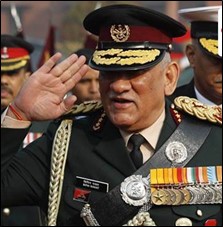Wednesday, 15th December 2021
Road to Chardham
In News
The Supreme Court has approved the broadening of three Himalayan highways, considered crucial by the Ministry of Defence (MoD) for quick troop build-up along the Indo-China border.
Background
- The three national highways act as feeder roads to the northern border with China. They are part of the Char Dham project and are to be expanded as double lane with paved shoulder (DLPS).
- In 2018, the road-expansion project was challenged for its potential impact on the Himalayan ecology. The SC constituted a high-powered committee to examine the issues, and hence directed the MoRTH in 2020, to stick to the limit of 5.5 metres road width as mentioned in the Ministry’s circular.
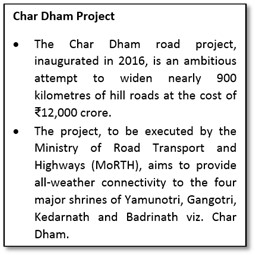
- In response to this, the Ministry amended its circular saying that “for roads in hilly and mountainous terrain which act as feeder roads to the Indo-China border are of strategic importance for national security, the carriageway width should be 7 m with 1.5 m paved shoulder on either side”. MoD filed an application seeking modification of the 2020 order.
- The NGO challenged the amendment to the circular, citing environmental concerns.
The Supreme Court mandate
- It allowed the MoD’s application for DLPS configuration for the three strategic highways.
- The MoRTH and the MoD need to take remedial measures in accordance of the recommendation of the High-Powered Committee.
- The Bench formed an oversight committee to ensure that the government implements the remedial measures recommended by the court’s HPC for the environment.
- The judgment said a “delicate balance” should be maintained between environmental considerations and infrastructural development so that the former did not impede the latter, specifically in areas of strategic importance crucial to the security of the nation.
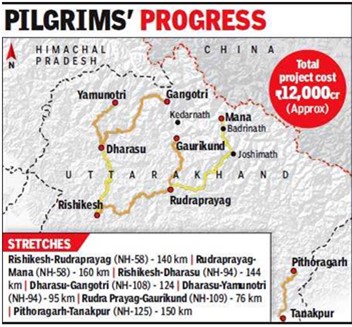
Recent disasters in the Himalayas
- In the flash floods of Kedarnath in 2013, more than 5,000 lives were lost.
- In February 2021, Rishiganga flooding swept away a part of the Tapovan Hydropower Plant and left over 200 killed or missing.
- Frequent forest fires, flash floods, cloud bursts, earthquakes and landslides in the region are evidence of it being in an extremely fragile and vulnerable zone geographically.
- A report by Government of India claims that the region has gotten warmer by 1.5 degrees Celsius between 1951-2014.
- In India’s seismic zonation map, Uttarakhand state falls in seismic zones IV and V – both denoting very high risk.
An Environmental Impact Assessment (EIA) of the Chardham project was not carried out since the project was made of “53 civil works”, each less than 100 km in length. Since 2013, highway expansion projects of less than 100 km have been exempted from EIA.
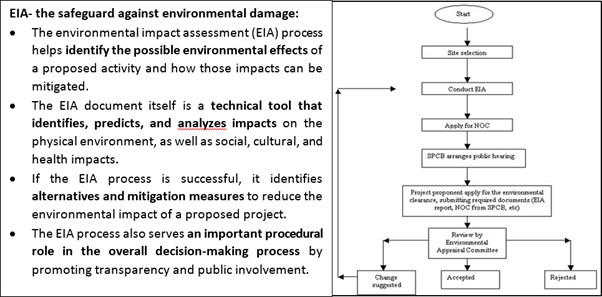
Sources:
- Supreme Court allows Centre to widen three Char Dham highways
- Supreme Court allows widening of roads under Char Dham Project
- Supreme Court Allows Defence Ministry's Plea To Allow Double Lane Widening Of Char Dham Highway Project
- Balancing National Security and Fundamental Rights in Environmental Cases
- Environmental Clearance - The Process
- Overview of the EIA Process
U.N. draft resolution on climate change
In News
India voted against a draft resolution at the United Nations Security Council (UNSC) linking climate to security, saying it was an attempt to shift climate talks from the UNFCCC to the UNSC.
About the News
- UNSC presidency under Niger has organised a debate titled ‘Maintenance of international peace and security: security in the context of terrorism and climate change.’
- One of the objectives of the debate was to examine how terrorism and security risks could be linked to climate change, as per a concept note circulated by Niger.
- It did not pass, with 12 UNSC members voting for it, India and Russia voting against it and China abstaining.
- India stated that viewing conflicts through the prism of climate change” was “misleading” and an oversimplification that could worsen conflicts rather than resolving them.
What are the major issues of concern?
- Contentions that the mandate of the draft resolution can also be achieved under the UNFCCC process.
- Apprehensions that the draft resolution is an attempt to bring climate talks to the Security Council and thus bypassing most of the developing countries from the formal negotiation process.
- Under Security Council only a few states will then have a free hand in deciding on all climate-related issues which is clearly neither desirable nor acceptable.
- It would undermine progress made at last UNFCCC i.e., COP-26 held in Glasgow.
- In the 2009 Copenhagen Climate Change Conference, rich countries had pledged to provide $100 billion per year in climate finance for developing countries as a whole, by 2020, a mandate which has not been addressed
At the conclusion of COP26, India held that it alone would need a trillion dollars by 2030 to achieve its climate ambitions.
What can be done?
- There is need to carry forward and materialise the two decades of work between Developing and ‘least developed’ countries to make “common but differentiated” responsibilities a fundamental tenet of climate action.
- Any unilateral attempt to link climate with security really seeks to obfuscate lack of progress on critical issues under the UNFCCC process and should be avoided.
- With many of the UNSC members being the primary contributors to climate change due to historical emissions, there is need that developed countries should address their promises with regard to climate action and take steps to provide $1 trillion in climate finance at the earliest.
Sources:
RBI’s PCA framework for large NBFCs
In News
The Reserve Bank of India (RBI) has recently introduced a Prompt Corrective Action (PCA) framework for large non-banking financial companies (NBFCs).
About the News
- Till now, the RBI has been imposing PCA only on banks and not on NBFCs.
- The framework will apply from October 2022 to all deposit-taking NBFCs.
- However, those not taking deposits and with an asset size of less than Rs 1,000 crore, primary dealers, government-owned NBFCs, and housing finance companies are exempt from this framework.
The PCA Framework for NBFCs
- Objective: The objective of the PCA framework is to enable supervisory intervention at appropriate time and require the supervised entity to initiate and implement remedial measures in a timely manner, so as to restore its financial health.
- Restrictions depending on Risk Threshold: Once an NBFC falls under PCA, it will be restricted on dividend distribution, issuance of guarantees, opening branches and restricted capital expenditure, depending on the risk threshold (the capital adequacy ratio, tier-1 capital ratio, and net NPA ratio)
- Withdrawal of restrictions: Taking the NBFC out of PCA framework or withdrawal of restrictions imposed will be considered if there are no breaches in risk thresholds in any of the parameters in four continuous quarterly financial statements, one of which should be annual audited financial statement.
- Significance: The PCA framework will bring the NBFCs almost on a par with banks in terms of supervision and regulatory reach followed by scale-based regulations and revision in non-performing asset (NPA) norms brought in by the regulator for the sector.

Source:
- RBI introduces tough PCA framework for large NBFCs, effective October 2022
- RBI’s stricter PCA rule to enhance NBFCs’ regulation
Image Source:
S Vijayalakshmi Pandit
On 15th December, 1953 S Vijayalakshmi Pandit of India was elected the first woman president of the eighth session of the United Nations General Assembly. S Vijayalakshmi Pandit was Indian political leader and diplomat, one of the world’s leading women in public life in the 20th century. She was the daughter of Motilal Nehru, she became an active worker in the Indian nationalist movement and was imprisoned three times by the British authorities in India. She entered municipal government in Allahabad before entering the legislative assembly of the United Provinces and becoming minister for local self-government and public health, the first Indian woman to hold a cabinet portfolio. With the coming of Indian independence, Pandit entered on a distinguished diplomatic career, leading the Indian delegation to the United Nations and serving as India’s ambassador to Moscow, Washington and Mexico. In 1953 Pandit became the first woman to be elected president of the UN General Assembly. She was appointed the Indian representative to the UN Human Rights Commission, and in 1979 she published ‘The Scope of Happiness: A Personal Memoir.’
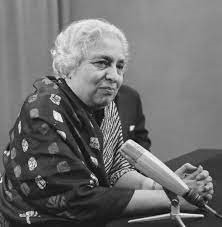
Source:
Human Capital Flight: Brain Drain
In News
Recent appoints of Indians like Leena Nair as CEO of French fashion house Chanel and Parag Agrawal as the CEO of Twitter has started the debate of Brain Drain from India
Setting the Context: Indicators of Human Capital Flight or Brain from India
- Status: 30% of the Fortune 500 Companies have Indians as their CEOs. As per the 2015 studies, one- third of all the engineers in Silicon Valley (USA) are from India and 10% of world's high tech company CEO's are all Indians.
- The Indian-origin Nobel Laureates in physics, chemistry, medicine and economics who pursued their higher education in the U.S. have settled there.
- At 17.5 million, there’s a reason the Indian diaspora is the largest in the world. “Non-residential” Indians are becoming “not-returning” Indians, and even the “reverse brain drain” has stopped.
- In the wake of the COVID-19, brain drain might re-emerge as an important conflict of interest between source and recipient countries, particularly in STEM fields (Science, Technology, Engineering and Mathematics).
What is Brain Drain or Human Capital Flight?
- According to Oxford Advanced Learner‟s dictionary Brain Drain is the movement of highly skilled and qualified people to a country where they can work in better conditions and earn more money.
- Brain-drain can also be named as “human capital flight” because it resembles the case of capital flight, in which mass migration of financial capital is involved. Brain drain is usually regarded as an economic cost, since emigrants usually take with them the fraction of value of their training sponsored by the government or other organizations. It is a parallel of capital flight, which refers to the same movement of financial capital.
Why is this happening? The Reasons for Brain Drain
- The Push Factors:
- Wage Gap: When seen in the context of the Purchasing Power Parity (PPP), average wages for a person in the US is more than six times of his Indian counterpart in the academia, more than three times in management and more than double in the IT sector.
- Quality of Higher Education: India lags behind the developed world in terms of quality higher education. There’s this growing sense of dissatisfaction that the current Indian education system is inept at preparing them for the challenges of the increasingly globalised world.
- Lack of Job Opportunities: Another OECD report stated recently that about 30.5 percent of India’s youth (aged 15-29) are neither in employment nor in education and training.
- Push Factors
- Societal Status: For a long time, the idea of people moving to a different country was seen as a badge of honour, a feather in the cap as it were.
- Social Safety: It’s the overall social safety net that is one of the main reasons for families to relocate out of India.
- Societal Norms: There is another emerging trend among the millennials who are leaving India to live without the rigid societal diktats and rules which the Indian society thrusts down.
- Pro-Student Policies: In recent years, one of the key attractions for Indian students planning to go overseas has been the pro-student policies in countries like Canada and the UK.
Is Brain drain bad for the country? To what Extent?
- Human Capital Formation: Brain drain adversely affects the quality and quantity of human capital formation. It is argued that brain drain robs poorer nations of research and innovation potential, thereby limiting the growth and development of local academic teaching and research
- With fewer skilled migrants, developing countries might also benefit from fewer investments, further entrenching this problem.
- Brain drain is also criticised for producing a fiscal burden on the country of origin as it loses out on the skills of a publicly trained and educated workforce
- Economic Loss: The UNDP estimates that India loses $2 billion a year because of the emigration of computer experts to the U.S. Indian students going abroad for their higher studies costs India a foreign exchange outflow of $10 billion
- Increasing Knowledge Gap: One reason as to why the developed countries prosper is because of the high intellectual migrants from the poor developing countries. This „knowledge gap‟ is increasing and the poor countries are becoming poorer and rich countries are emerging as knowledge countries and they are ruling the world.
But, is it all bad? Brain Gain v/s Brain Gain
- Linking of Labour Market: India plans to export skilled professionals, including health workers, to 12 friendly countries mainly in Europe and Asia, on the lines of a manpower-supply pact with Japan. The opportunity for India to link its labour market with those of other friendly countries is immense.
- Remittances: According to the World Bank, Indians working overseas sent back an estimated $76 billion in 2020. India is the world’s largest recipient of foreign remittances.
- Opportunity to materialise the Demographic Dividend: Post the pandemic, healthcare is a sector where India can score big by supplying not just well-trained nurses but also several allied health service personnel.
- Human Resource Development: A moderate amount of brain drain can benefit a country of origin because it results in more educated workers: the possibility of emigrating pushing the population in sending countries to pursue more education.
- Boost to Investments: Diaspora and ethnic networks can lead to brain gain by boosting investments and exchange in both countries of origin and destination by migrants leveraging their knowledge of both countries.
- Improving Image of the Country: Indian expatriates abroad, especially highly–qualified expatriates bring benefits such as image improvement for the country, knowledge transfers, access to new markets, business networks.
- Break Societal Barriers: Indians help each other regardless of religion, region of birth, or caste. They work for uplifting their community, and fostering more entrepreneurship, mentor the next generation of entrepreneurs.
How should India approach towards Brain Drain?
- Root-cause Analysis: There is also an urgent need is to first understand what is compelling people to leave India. There is need to assess the quality of life, employment opportunities, social structure, financial and social security, development, gender equality, etc. in India.
- There is need to enable a conducive ecosystem in India that creates world-beating companies and in building institutions that can produce Nobel Laureates.
- Government Initiatives: There are a number of measures which the Indian government is taking to plug brain drain, such as prioritising skill development through its National Skill Development Mission that aims to train approximately 400 million people across the country by 2022.
- Start-ups as Facilitator: With companies like Paytm, Oyo Rooms, Swiggy, Ola Cabs hitting it big in the Indian marketplace, we can reliably assume that start-ups will help the Indian government in driving job creation in the coming years.
- Brain Circulation: One way that the diaspora can be a positive force is through the return of skilled professionals to their countries of origin: brain circulation. These professionals can also been used to facilitate and coordinate technology transfer. The project includes strong incentives to ensure that a higher number of candidates are attracted to this opportunity.
- Glocal Diaspora: Diaspora networks can also be used without migrants returning to sending countries, by leveraging them to work on projects or businesses locally. One excellent example of an efficient diaspora network is GlobalScot, a network of high-powered Scots from all over the world who use their expertise and influence as antennae, bridges and springboards to generate projects in Scotland.
- Global Commons: A significant step towards stemming the brain drain of medics, scientists and students would be to show exigency and declare STEM-youth as the sixth ‘global common’ to be equitably shared by all unilaterally yearning-to-survive countries in a pretending-to-be multilateral world.
Conclusion: For the balance of power and for the staggered development of the world, it is very important to stop the phenomena of brain-drain. This will help a particular country to use all local skilled citizens for development and proliferation. But to hold these skilled workers at their native places, it is also important to provide them enough work opportunities and living facilities. For this purpose, developed nations should help developing countries with necessary money and resources. So that each and every human of this planet can have good standard of living and each and every nation can introduce itself as a developed nation. This scenario must change for the sustainable growth of the nation.
Question: Brain Drain is not an entirely bad phenomenon for India. Critically analyze.
Sources:
- Indian students' overseas spending to hit $80 bn a year by 2024: RedSeer
- India looks to export talent to 12 countries
- The Great Indian Brain Drain
- The Great Indian Brain Drain, and Nothing to Come Back To
- ‘NRI’ tag not a feather in cap, time to reverse brain drain
- Why do Indian-Americans succeed?
- Is the brain drain always negative?
- Brain Drain: Socio-Economic Impact on Indian Society
- Brain Drain to Brain Circulation: In Indian Context
Parker Solar Probe enters the Solar atmosphere
This is image of NASA’s Parker Solar Probe which has now flown through the Sun’s upper atmosphere – the corona – and sampled particles and magnetic fields there. For the first time in history, a spacecraft has touched the Sun. Because the sun lacks a solid surface, the corona is where the action is; exploring this magnetically intense region up close can help scientists better understand solar outbursts that can interfere with life here on Earth. As it circles closer to the solar surface, Parker is making new discoveries that other spacecraft were too far away to see, including from within the solar wind – the flow of particles from the Sun that can influence us at Earth. In India, the Aditya L1 mission, led by ISRO, aims to set up a space-based observatory to track the Sun and it is expected to be launched sometime in mid-2022.

Source:
PANEX-21
- Context: A Curtain Raiser Event PANEX-21, for the member nations of BIMSTEC countries, was held at New Delhi recently.
- PANEX-21 aims to foster joint planning and building regional cooperation for responding to natural disasters.
- It has the participation of subject matter experts and delegates from India, Bangladesh, Nepal, Bhutan, Myanmar, Sri Lanka and Thailand.
- BIMSTEC is a multilateral and multi-agency exercise for the member countries of BIMSTEC (Bay of Bengal Initiative for Multi Sectoral Technical and Economic Cooperation) that will focus on Humanitarian Assistance and Disaster Relief (HADR) operations.

Source:
Image Source:
Legal Entity Identifier (LEI)
- Context: Banks that facilitate cross border transfer of over Rs 50 crore will have to quote the legal entity identifier (LEI) from October 2022.
- The LEI is a 20-digit number used to uniquely identify every legal entity in any jurisdiction that is party to a financial transaction globally to improve the quality and accuracy of financial data systems for better risk management via a global reference data system.
- LEI has been introduced by the RBI, under Foreign Exchange Management Act 1999.
- Businesses can obtain an LEI from any of the Local Operating Units (LOUs) accredited by the Global Legal Entity Identifier Foundation (GLEIF), the body tasked to support the implementation and use of LEI.
- LEI has been introduced in a phased manner for participants in the over-the-counter (OTC) derivative, non-derivative markets, large corporate borrowers and large value transactions in centralised payment systems.
- For non-resident counterparts/ overseas entities, in case of non-availability of LEI information, AD category I banks may process the transactions to avoid disruptions.

Source:
- Firms sending over Rs 50 crore need unique ID
- 20-digit LEI must for cross-border transactions soon: RBI
Image Source:
Co-Lending
- Context: Recently, the RBI permitted the banks to co-lend with all registered NBFCs (including HFCs) to increase lending to the priority sector based on a prior agreement.
- This has led to unusual tie-ups between banks and NBFCs: For example, SBI signed a deal with Adani Capital, a small NBFC, for co-lending to farmers to help them buy tractors and farm implements.
- Co-Lending Model allows for a joint contribution of credit at the facility level by both the lenders, as also sharing of risks and rewards.
- It aims to improve the flow of credit to the unserved and underserved sector of the economy and make available funds to the ultimate beneficiary at an affordable cost, considering the lower cost of funds from banks and greater reach of the NBFCs.
- It will help banks to expand customer base and enables them to provide last mile banking services.

Source:
- Bank-NBFC co-lending: how it works, and the concerns it raises
- Can changes in the co-lending model ease credit availability for the priority sector?
Image Source:
Atmanirbhar Hastshilpkar Scheme
- Context: North Eastern Development Finance Corporation Ltd (NEDFI) has recently announced Atmanirbhar Hastshilpkar Scheme.
- The scheme has been launched with the objective of developing the grass root Artisans of the North Eastern Region by providing financial assistance in the form of term loan for income generating activities for setting up, expansion, modernization and other activities related to the sector.
- The credit facility is collateral free and carries a subsidized interest rate of 6% p.a., which is repayable in 24 months.
- For regular repayment, an incentive of 1% on the interest rate is provided, which will be refunded to the artisans on successful repayment of loans.
- The interested artisans to apply for the scheme must satisfy the following eligibility criteria:
- Registered/ unregistered artisan/ Individual
- Having valid qualification or practicing any art form
- No existing loan from any other bank/ financial institution
- Bank Account and
- Aadhaar Card (optional)

Source:
- NEDFI Announces New Scheme Atmanirbhar Hastshilpkar Scheme for the Artisans under Ministry of Doner
- NEDFi launches ‘Atmanirbhar Hastshilpkar’ scheme to support artisans
Image Source:
Reimagining SHGs: BL
Essence: The article talks about the comparison of SHGs and MFIs. Self Help Groups (SHGs) play major roles in various development projects in India. They have been catering to the poorest and mostly rural clients and share profit from group lending among the clients. On the other hand, Micro Finance Institutions (MFIs) cater usually to the peri urban. They operate in the social sector but are profit oriented. Women, predominantly are clients of both.
But there can be many questions comparing the SHGs and MFIs, revolving around the sufficiency of the loan, customer protection, outstanding loans, efficiency of social capital created by them etc. Which one of the two is better is difficult to answer but what is pertinent is that India needs many efficient models of microfinancing to reach the marginal and unreached section. The article suggests that in order to have sustainable SHG movement, transformation of NGOs and Corporate Banking Correspondents into intermediaries and patronage by the State Government is required.
Why to read this article?
- To know the importance and salient features of SHGs.
- In order to compare and contrast SHGs with MFIs and to know what more should be done to have a sustainable Self-Help Group Movement.
- Self Help Groups (GS II) remain constantly in news as it focus mostly on women, poor and rural sector. Thus, it is important for a student to know its relevance and challenges.
Source:
Bringing the Indian and Pacific Oceans together on IUU fishing: ORF
Essence: The author points to the fact that there is phenomenal rise in illegal, unregulated and unreported (IUU) fishing in the Indian ocean. Though each of these 3 components of IUU are not mutual exclusive and there are many crossovers between illegal, unregulated and unreported fishing, the unreported aspect of fishing is the most harmful. Rogue vessels, and even the registered vessels indulge in underreporting, misreporting and non-reporting. It leads to paying less fees/charges/levies to the trawlers but hampers the marine ecology and compromises marine data collection. It also robs the coastal communities of receiving socio-economic equitable benefits from marine resources.
In this aspect, there are key learnings from Regional Fisheries Surveillance Center in Pacific ocean which conducts monitoring, control and surveillance (MCS) through regional cooperation of coastal states in the Pacific. Pacific Island Forum Fisheries Agency’s could help the Group of 16 Like Minded Coastal States of Indian Ocean Tuna Commission (G16) in framing guidelines for fishing in EEZ and regulating high seas. There is also a need to have an independent provider of fisheries science for sustainable harvesting of marine fish. Finally, people’s participation through NGOs like Global Fishing Watch and Fish-I-Africa can help combat illegal fishing in Indian ocean.
Why you should read this article?
- To understand the dimensions of illegal, unregulated and unreported fishing in Indian ocean.
- To gain insight into how the Pacific Ocean fisheries agency has established an institutional mechanism to fight IUU.
Source:
The good, bad, and sober news that the NFHS data presents: HT
Essence: The article provides noteworthy data from recently released in The National Family Health Survey. While some health parameters like Total Fertility Rate, women’s education and child mortality rate showed progress, parameters like women and child nutrition performed poorly. Along with that certain target allocating 67 % of total health expenditure to primary care is yet to be achieved.
Four key implications got reinforced with release of the data set. One, the need for greater fiscal flexibility for states to innovate and design their own responses to the specific needs of the state. Two, increased expenditure on and attention to primary care. Three, an increased allocation by the states to health. Four, a gendered approach to health delivery.
Why you should read this data?
- To understand the recent trends of various parameters released by The National Family Health Survey.
- To understand the implications of the released data set.
- The data can be used to in answers related to social justice. (GS-2)
Source:
A girl from Gujarat creating a new road to safeguard environment
Background
- Pollution of water bodies has become a regular phenomenon, where the realization about the gravity of the issue is missed to a large extent.
- Sneha Shahi, a PhD scholar now from Gujarat is working towards cleaning up of streams.
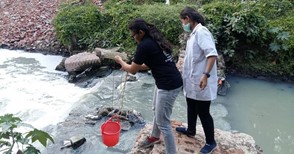
A road towards a great start to environmental change
- Since childhood, Sneha had shown keen interest in environmental activities.
- She was enrolled in UNEP’s Plastic Tide Turner Challenge, where she met 17 other students who worked towards a massive change.
- She initiated a clean-up drive of a natural stream which was mistaken to be a drain initially due to high amount of waste dumped in it.
- She believed in behavioral change to bring changes in the ecosystem.
- Initially there was resistance from people, but Sneha and her team were adamant to bring the situation to light.
- They managed to clean up 700 kg waste and revived the ecosystem for the turtle and crocodile in the stream.
Quote: “The strongest governments on earth cannot clean up pollution by themselves. They must rely on each ordinary person, like you and me, on our choices, and on our will.” — Chai Jing
Source:
Share the article
Get Latest Updates on Offers, Event dates, and free Mentorship sessions.

Get in touch with our Expert Academic Counsellors 👋
FAQs
UPSC Daily Current Affairs focuses on learning current events on a daily basis. An aspirant needs to study regular and updated information about current events, news, and relevant topics that are important for UPSC aspirants. It covers national and international affairs, government policies, socio-economic issues, science and technology advancements, and more.
UPSC Daily Current Affairs provides aspirants with a concise and comprehensive overview of the latest happenings and developments across various fields. It helps aspirants stay updated with current affairs and provides them with valuable insights and analysis, which are essential for answering questions in the UPSC examinations. It enhances their knowledge, analytical skills, and ability to connect current affairs with the UPSC syllabus.
UPSC Daily Current Affairs covers a wide range of topics, including politics, economics, science and technology, environment, social issues, governance, international relations, and more. It offers news summaries, in-depth analyses, editorials, opinion pieces, and relevant study materials. It also provides practice questions and quizzes to help aspirants test their understanding of current affairs.
Edukemy's UPSC Daily Current Affairs can be accessed through:
- UPSC Daily Current Affairs can be accessed through Current Affairs tab at the top of the Main Page of Edukemy.
- Edukemy Mobile app: The Daily Current Affairs can also be access through Edukemy Mobile App.
- Social media: Follow Edukemy’s official social media accounts or pages that provide UPSC Daily Current Affairs updates, including Facebook, Twitter, or Telegram channels.

